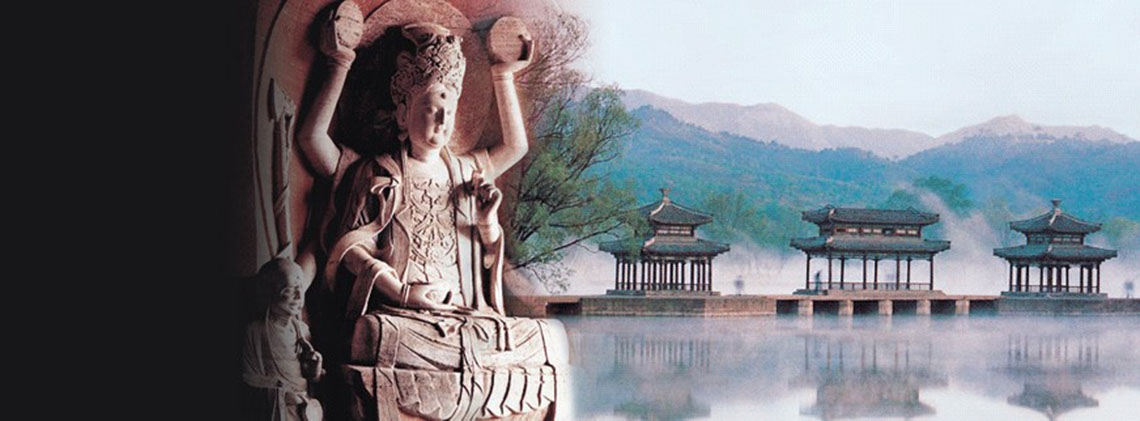
World Heritage in China
Splendid
Chi Culture
Topic
World Heritage in China
In 1985 China joined the World Heritage Convention to participate in the protection of the world’s cultural and natural heritage. Since 1987, China has repeatedly recommended cultural and natural heritage sites to the United Nations Educational, Scientific and Cultural Organization (UNESCO). To date, a number of sites have been approved by the organization for inclusion on the World Heritage list.
UNESCO established four categories for world heritage: cultural heritage, natural heritage, combined cultural and natural heritage, and cultural landscape heritage. Each category has significant historical, artistic, anthropological, or scientific value, which either marks an important stage in human history, or provides a special testimony for a lost civilization or cultural tradition.
The Imperial Palace in Beijing, China’s largest museum, is a cultural heritage. Other cultural heritage sites include the Zhoukoudian “Peking Man” site, Mount Taishan, the Great Wall, the Mausoleum of the First Emperor of Qin and the Terracotta Warriors, the Mogao Caves, the Mountain Resort and its Outlying Temples in Chengde, the Temple and Cemetery of Confucius and the Kong Family Mansion in Qufu, the Ancient Building Complex in the Wudang Mountains, the Historic Ensemble of the Potala Palace (including the Jokhang Temple and Norbulinhka), the Old Town of Lijiang, the Ancient City of Pingyao, the Classical Gardens of Suzhou (including the Great Wave Pavilion and five other sites), the Summer Palace, the Temple of Heaven, the Dazu Rock Carvings, the Mount Qingcheng and the Dujiangyan Irrigation System, the Ancient Villages in Southern Anhui—Xidi and Hongcun. The Longmen Grottoes, the Imperial Tombs of the Ming and Qing Dynasties, the Yungang Grottoes, the capital cities and tombs of the ancient Koguryo (or Goguryeo) Kingdom, and the historic center of Macau, are all cultural heritage sites.
Natural heritage refers to natural and living things, the habitats of endangered animals and plants, or natural attractions. Their aesthetic or scientific value is recognized worldwide; either as representing an important stage in the evolution of the earth or as a unique example of a natural phenomenon. Huanglong Scenic Valley, Jiuzhaigou Valley, Wulingyuan Scenic Area, and the Three Parallel Rivers (of the Yunnan Protected Areas) are all listed as World Natural Heritage sites.
The combined cultural and natural heritage represents dual heritages. Mount Huangshan was selected in 1990, and others chosen in later years include Mount Emei, the Leshan Giant Buddha, and Mount Wuyi.
Cultural landscape heritage includes landscapes that are designed and constructed by humans—most of these are directly related to religion, natural factors, art, or culture, but are not characterized solely by physical appearance. Lushan National Park is an example of such a site.
Human Oral and Intangible Heritage refers to those cultural activities that are special forms of cultural expressions such as language, stories, music, games, dance customs, and other means of artistic expression. Traditional Chinese opera, Kunqu, known as the “Mother of Chinese drama,” was proclaimed a Masterpiece of the Oral and Intangible Heritage of Humanity in May, 2001. The guqin (sometimes known as a Chinese zither) and its music was also inscribed on the Representative List of the Intangible Cultural Heritage of Humanity in 2008.
Changes in landforms, natural disasters, deforestation, and human ignorance, as well as the turmoil of war, and religious prejudices all pose a great threat to the world’s heritage, especially human-made destruction. China has made various efforts to protect world heritage under limited conditions. For example, trees were planted at the Dunhuang Mogao Caves to resist wind and sand damage; long-term monitoring of the water levels at Mount Emei and Leshan Giant Buddha are also carried out as well as research and legislative protection of rare animals and plants.



